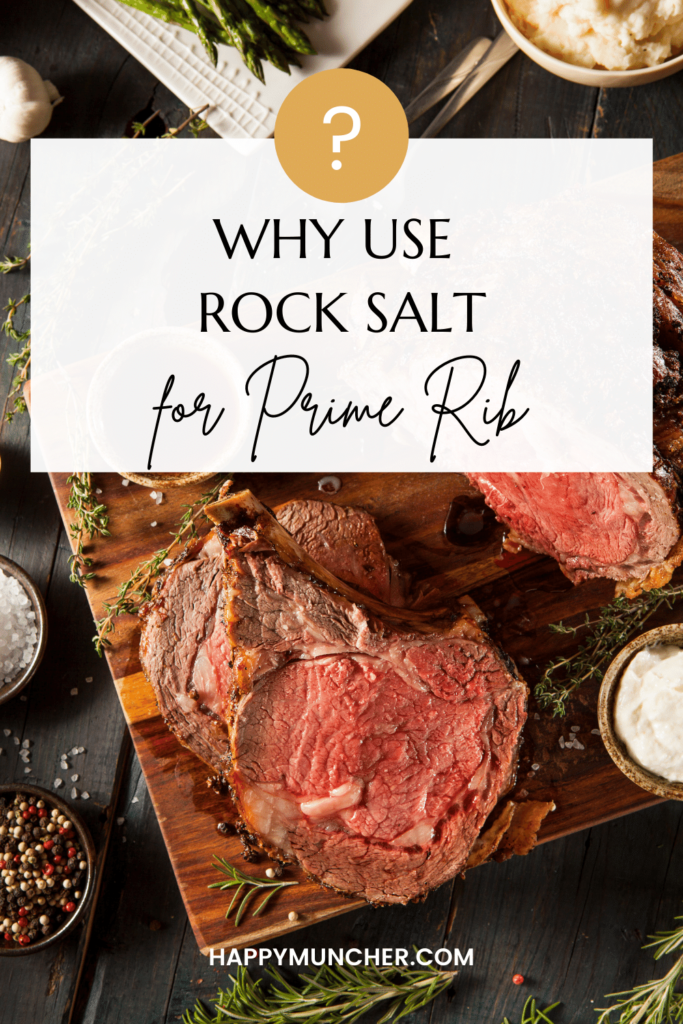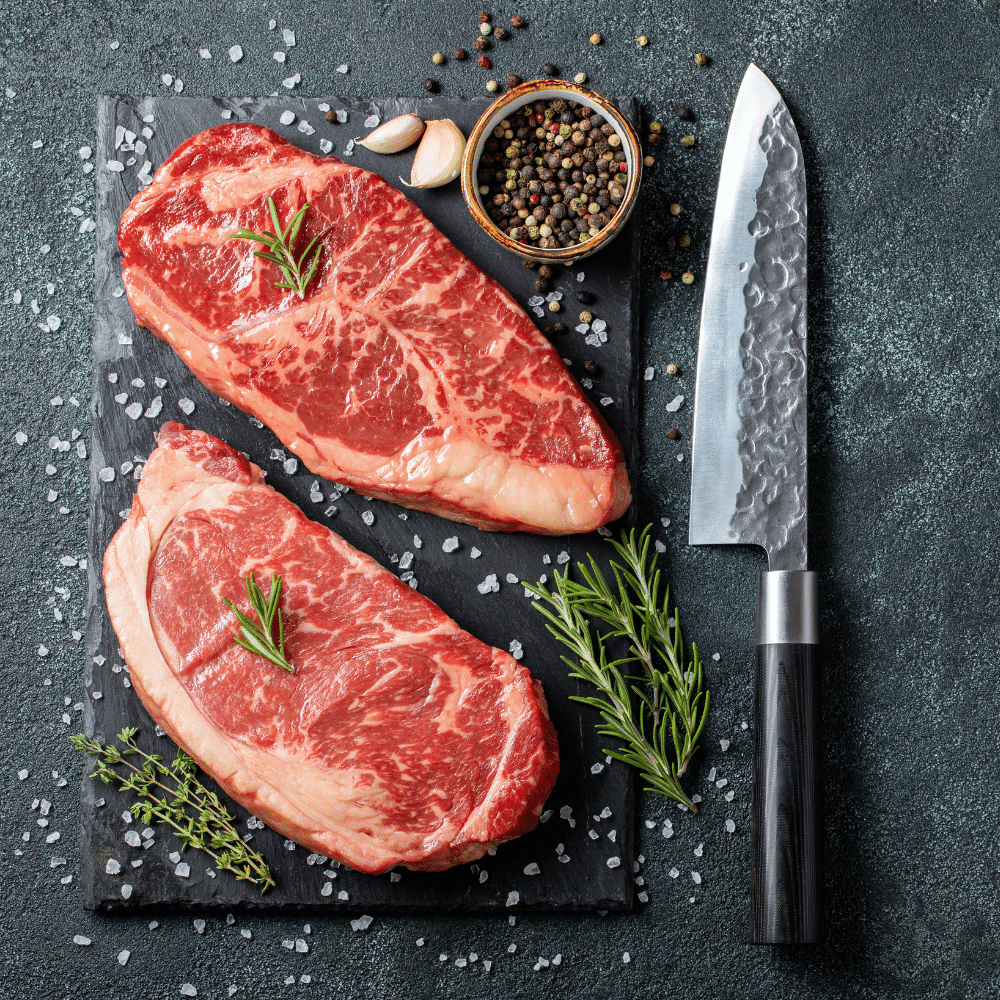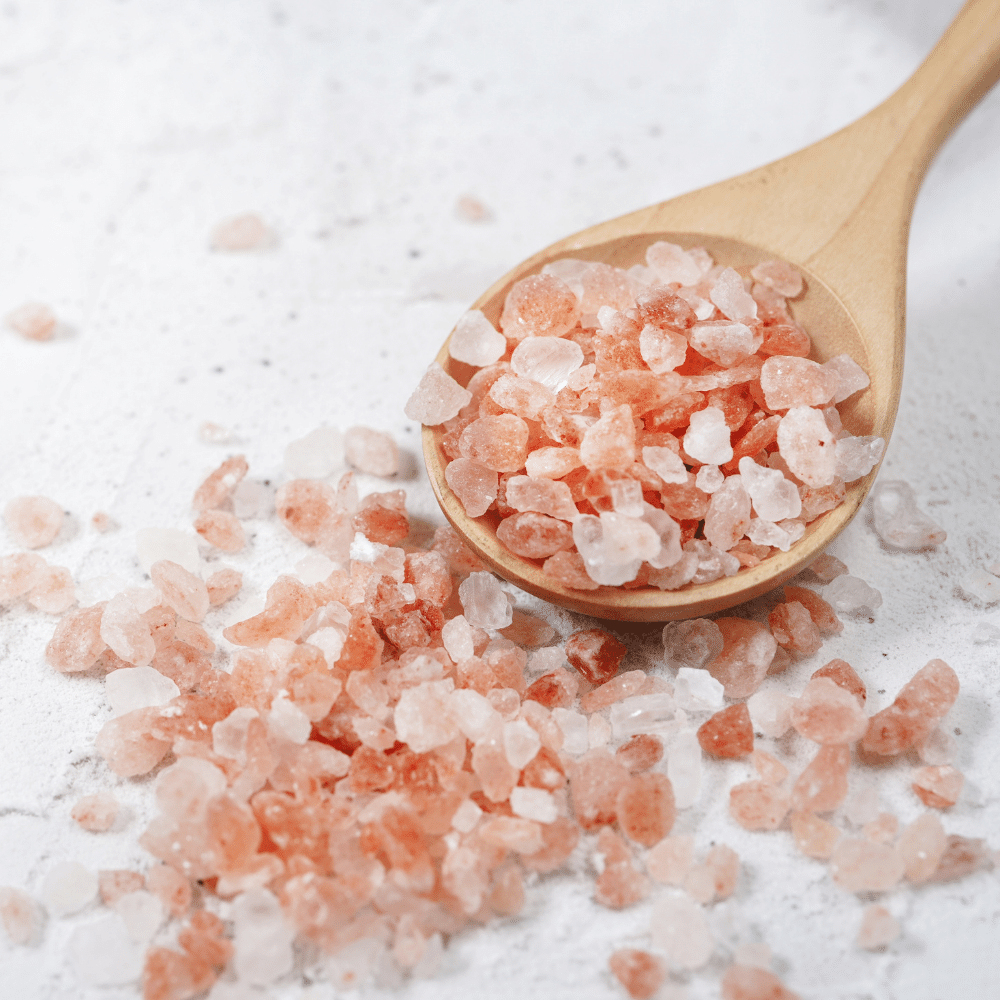The reason we use rock salt for prime rib is because of the amazing texture it gives the meat, as well as the way it helps bring out flavors and prevent dried-out meat.
We use rock salt for prime rib for the same reason we use it for other meats: it’s one of the best ways to ensure your meat is cooked to perfection.
Read Also: What Wine Goes With Prime Rib? (10 Best Wines)

Whether you’re an old hand at using rock salt for prime rib or a newbie, chances are you’ve had a few questions about the topic.
It’s one of the most popular uses of rock salt, and it’s also one of the best ways to use it.
In this post, we’ll explore the benefits of using it to cook your prime rib.
We’ll also give you some advice on how to make sure it cooks evenly and tips and tricks to make sure it comes out perfect every time!
Why Use Rock Salt for Prime Rib?

You can use any salt you like, but if you’re using large chunks, you’ll want to make sure it’s food-grade.
I personally like to use rock salt because it holds the shape I’m looking for, as well as its texture.
You can also use Kosher salt, which is coarser than regular salt and therefore makes a good crust when spread out.
Just make sure you don’t use too much or your meat will be too salty.
You can add aromatics to really make your prime rib come alive.
I like to add fresh rosemary to the salt and mix it in with the water (this makes a very nice aromatic).
How to Use Rock Salt for Prime Rib

If you’re planning to serve prime rib at your next dinner party, you’ve probably heard that rock salt is the best way to cook it.
But what does that mean?
Rock salt is just a fancy word for salt in its purest form.
Its larger grains mean it takes longer to dissolve, so if you cover the roast in rock salt and then cook it, you get a crunchy crust on the outside of the meat that keeps all the juices in.
Not only does this create an amazing texture, but it also helps bring out the flavor of the meat itself.
Here’s how to use rock salt for prime rib:
- Start by getting a large piece of butcher paper or aluminum foil—you’ll want enough to wrap up your roast completely.
- Then sprinkle a layer of rock salt onto your wrap (enough to cover the entire surface) and lay down one side of your roast.
- Sprinkle another layer of rock salt over that side, and then lay down the other side, so both pieces of meat have equally been coated in salt. Wrap up your roast tightly and place it on a baking sheet with sides high enough to catch any juices.
- Bake your roast according to instructions or until it reaches an internal temperature of 130 to 135 degrees Fahrenheit (for medium-rare), then let it rest for 15 to 20 minutes before serving.
4 Tips for Using Rock Salt for Prime Rib

When you think of prime rib, chances are you’re imagining a huge hunk of meat—a roast, really—that’s been seared on the outside and cooked to a delectable medium-rare temperature in the middle.
Prime rib is traditionally served with potatoes, like au gratin or mashed potatoes, and some sort of veggie—usually roasted carrots or asparagus.
But have you ever tried cooking it with rock salt?
It’s just as amazing as it sounds.
In fact, we’ve found the best way to cook it is to submerge it entirely in rock salt to make a “salt crust.”
It traps moisture and flavor in the meat while giving it a beautiful crispy exterior.
It’s also super easy!
Here are some tips and tricks to get you started:
1. Use High-Quality Rock Salt
The first important tip for using rock salt is to make sure that you are using high-quality rock salt.
It’s not always easy to tell what quality of rock salt is just by looking at it, but you can start by paying attention to the color of the rock salt.
For example, grayish-white rock salt is lower in minerals, which means it will have less flavor than darker rock salts.
Once you’ve found a darker colored option, pay attention to the size of the crystal: large crystals will have more surface area and therefore be better at absorbing moisture from the roast before cooking.
This helps prevent your prime rib from drying out while cooking.
2. Don’t Use Too Much
Now that you’ve found a great rock salt to use, you might be tempted to cover your whole prime rib in it—but don’t!
Using too much rock salt can actually cause problems with your roast.
The excess salt will draw out moisture from the meat—even after cooking—which can leave your roast a little dry or chewy around the edges where there was more contact with the salt crystals than other parts of the roast where there was less contact with them.
3. Add Rosemary and Garlic for Some Extra Flavor
Rock salt, on its own, will form a delicious crust on your roast.
If you want to take your prime rib up another notch, though, add in some fresh rosemary and garlic powder to your rub.
It’s an excellent way to add more depth of flavor to your prime rib recipe.
4. Use a Good-Quality Cooking Thermometer
Rock salt is an imprecise cooking method and can be prone to temperature fluctuations, so you’ll want to use your thermometer to make sure you’re getting an accurate reading of your roast’s internal temperature.
What Does Rock Salt Do to Meat?
Salting meat is a centuries-old practice that serves many purposes.
Not only does it help prevent food-borne illness, it also helps to preserve meat and improve flavor.
We all know a little salt on our food can make it taste better, but how exactly does this work?
When you rub salt on a vegetable or meat, it dissolves in the food’s exterior moisture, creating a concentrated solution that draws more water from the interior to the surface.
This process illustrates salt’s role in preserving meat for jerky, ham, or hard-cured salami.
You can also use this method to break down the vegetables’ cells, making them easier to digest and giving them a softer texture.
It’s not just about flavor—it’s about preserving what you eat and making your body happier too!
Can I Use Rock Salt on Steak?
Yes, you can use rock salt on steak.
I do it all the time.
I used to just do regular table salt, but then I found that rock salt gave me more flavor and a more solid crust than the finer grains of table salt.
I think it makes a big difference in the juiciness of the steak overall.
Use a lot of it and rub it into the meat liberally before you cook it.
Hi, I'm Benjamin. I love cooking, long walks, and my girlfriend! Here you’ll find simple and delicious recipes that you can make in 30 minutes or less.

